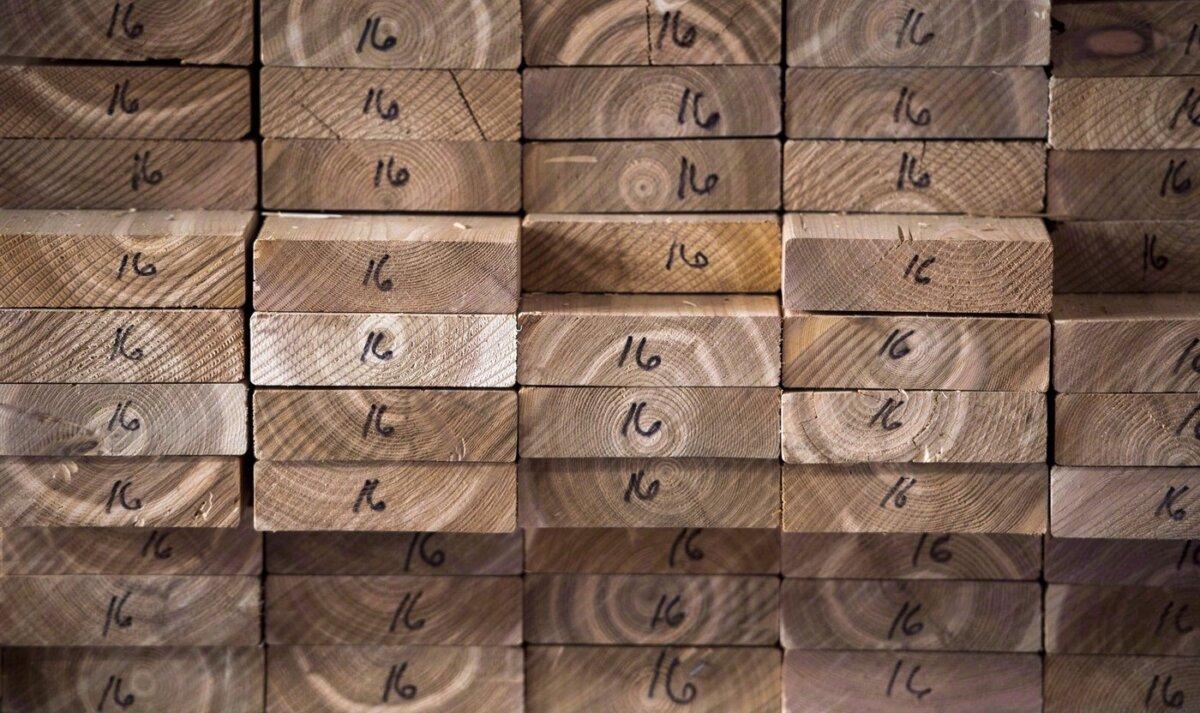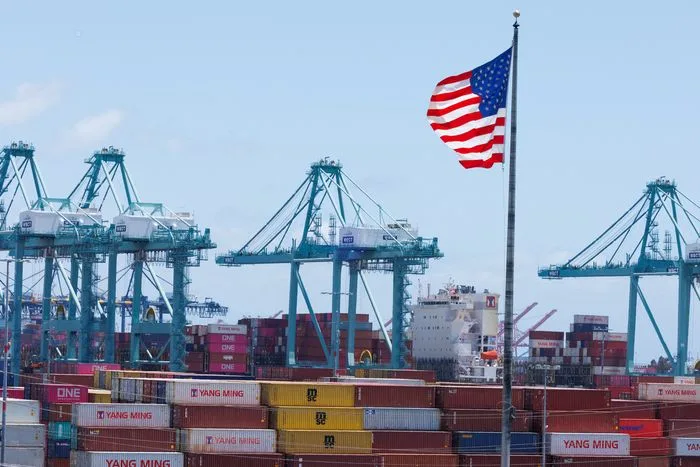By Austin Alonzo
Starting on Oct. 14, the United States began to apply a 10 percent tariff on all imported softwood timber and lumber. Additionally, a 25 percent tariff has been placed on all imports of upholstered wooden products, typically furniture, as well as on kitchen cabinets and vanities.
Some affected by the tariffs love the idea. The American lumber industry and cabinet makers see the tariffs as a necessary move to stop foreign competitors from systematically undercutting Americans.
Others, such as the furniture industry, are skeptical. Furniture industry associations say they heavily depend upon imported components to finish products in America. They also see the tariffs as yet another drag on an industry already stymied by a slow housing market.
Here’s what insiders are saying about the tariffs’ possible short- and long-term impact.
The Tariffs
On Sept. 29, President Donald Trump signed a proclamation adjusting the U.S. tariff structure as it applies to timber, lumber, and certain derivative products.
In accordance with the proclamation, the tariff on furniture will increase to 30 percent in 2026, and the tariff on kitchen cabinets and vanities will increase to 50 percent on the same date. All of the tariffs are made on the basis of Section 232 of the Trade Expansion Act of 1962, which requires that national security be threatened for a tariff to be created.
In a statement released on Sept. 29, the White House said the measures are justified because “an overreliance on foreign timber, lumber, and their derivative products could jeopardize the United States’ defense capabilities, construction industry, and economic strength.”
In a pair of posts on his Truth Social account, Trump said his reasoning for including cabinetry and vanities in the order was “the large scale ‘FLOODING’ of these products into the United States by other outside Countries.”
The Lumber Feud
The lumber tariff is just one more scene in the long-running drama between the United States and Canada over softwood lumber. Since the 1980s, the North American countries have feuded over the forest product.
A difference in law lies at the foundation of the argument. Canada’s vast forests are 90 percent publicly owned, which means each province’s government can decide which logging companies can harvest timber and how much they will pay for the privilege. The opposite is true in the United States, where forests are 90 percent privately owned and harvesting is controlled by landowners who charge a market rate to fell trees on their property.
Because of this, the U.S. Lumber Coalition, an industry group, argues that Canadian companies “dump” wood onto the American market at an artificially low price. In effect, the coalition argues, due to the difference in policy, Canadian companies can harvest as much wood as they want at any time they please, while American companies are subject to the laws of supply and demand.
In an interview with The Epoch Times, Zoltan van Heyningen, executive director of the U.S. Lumber Coalition, said the organization applauded the move as it is evidence that the Trump administration is choosing to support “domestic production over foreign production.”
Furthermore, Van Heyningen said the tariff decision and the broader proclamation are a critical step toward finding a “permanent solution to the problem of Canada’s unfair trade practices.”

Furniture Makers Have Doubts
The tariffs drew a negative reaction from the furniture industry, which is highly reliant on imports and already struggling as demand shrinks.
While the American Home Furnishings Alliance, a trade group based in High Point, North Carolina, did not respond to a request for comment from The Epoch Times, a group associated with the Alliance called Furniture for America issued a lengthy statement on the matter in April.
In a 21-page letter it submitted to the Department of Commerce, the group representing the interests of companies involved in the domestic manufacture and importation of furniture, disputed the legal grounds of the tariffs, saying there is not a “rational relationship between imports of wood products or furniture and the national security of the United States.”
Furniture for America also stated that it supports the idea behind the Trump administration’s push to strengthen America’s wood product industry and bring jobs back to the United States, but it thinks that “no amount of tariffs will bring American furniture manufacturing back to its prior levels.”
In the letter, Furniture for America argued that the American furniture industry does not currently have enough skilled workers or American-made materials to be self-sufficient.
An industry overview published by the American Home Furnishings Alliance in 2021 said 92 percent of all metal furniture, 86 percent of all wood furniture, and 42 percent of all upholstered furniture sold in the United States in 2020 was imported. The top exporting countries that year, the report said, were Vietnam and China, which collectively accounted for $14.7 billion worth of U.S. imports. All told, the report said, Americans spent $141.7 billion on residential furniture and bedding in 2020.
The same overview said overall employment at U.S. furniture factories dropped to 294,000 in 2020 from 336,000 in 2018.
Those comments were echoed by Williams-Sonoma CEO Laura Alber during the company’s most recent earnings call held on Aug. 27.
In her commentary, Alber said the leading furniture retailer is already dealing with tariffs by making some price increases, renegotiating with suppliers, and altering its supply chain. In the same call, Alber said it will be “very difficult for the industry … to bring a huge amount back to the United States in a short window of time” due to a lack of existing production infrastructure.
Alber also said tariffs will raise prices on the lower end of the market since that area is dominated by Asian imports.
Cabinet Makers Cheer
The cabinet industry, as represented by the American Kitchen Cabinet Alliance, cheered the news. In a Sept. 28 release, the alliance said the tariffs will “save American cabinet manufacturers from a flood of unfairly traded foreign cabinet imports that are threatening 250,000 cabinet jobs across the country.”
In a letter it sent to the White House in September, the alliance said the $14 billion kitchen cabinet industry has been “decimated due to decades of unfair foreign trade practices perpetrated by foreign companies from China, Vietnam, Mexico, Malaysia, Cambodia, Thailand, and Indonesia.” The same letter accused foreign competitors of undercutting American manufacturers by as much as 70 percent.
In an undated statement published on its website, the alliance accused other countries of transshipping Chinese goods to evade existing trade controls designed to protect the American cabinetry industry. Since 2020, the group said, foreign competition has led to an estimated $6.5 billion in lost revenue.
Representatives of the American Home Furnishing Alliance, American Kitchen Cabinet Alliance, and Williams Sonoma did not respond to a request for comment from The Epoch Times by publication time.

Will Prices Rise?
It remains to be seen what the exact impact of the lumber, furniture, and cabinet tariffs will be on the American public.
In a statement it shared with The Epoch Times, the National Association of Home Builders said it believes the tariff package will “create additional headwinds for an already challenged housing market by further raising construction and renovation costs.”
“To bring stability to the housing market, the administration needs to seek fair, equitable deals with America’s trading partners that quickly roll back tariffs on building materials,” association Chairman Buddy Hughes said in a statement.
Van Heyningen, executive director of the U.S. Lumber Coalition, said he disagreed with the National Association of Home Builders’ argument about tariffs on Canadian lumber raising home prices.
As the Canadian companies own their exporters of record, Van Heyningen said, those companies, not the consumer, will be the ones paying the cost of the tariffs. Van Heyningen also said that lumber, while a significant building material, makes up only a small portion of the purchase price of a new home. He said lumber makes up about 2 percent of that cost.
Wayne Winegarden, a senior fellow at the Pasadena, California-based Pacific Research Institute, said the question of who actually pays a tariff is tricky because each market for each product is different.
Generally, consumers have been insulated from tariffs so far because companies anticipated those measures and pre-purchased goods. However, Winegarden told The Epoch Times he anticipates there will start to be an impact as companies pay higher prices and start passing them on to consumers. In the future, consumers will likely pay some but not all of the tariff rate.
As for housing, Winegarden said he thinks there will be an impact on the cost of construction in 2025 and beyond due to tariffs on lumber specifically and other building materials generally. Given the current relative weakness of the housing market, this is a “particularly bad time to be increasing the cost of construction.”
“I think it’s going to be one of the most obvious and most visible impacts of these tariffs that people are going to see,” Winegarden said. “Even people who aren’t in the market are going to see it and be bothered by it.”





